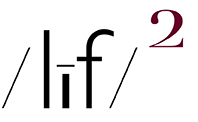(embiggenable)
(embiggenable)
(embiggenable)
A FEW DAYS AGO I WAS THINKING ABOUT HOW MY ADOPTION of the iPhone as my primary picture making device has changed my picture making habits. To be certain it has not changed or altered my vision in any manner but it has changed the promiscuity quotient in my discursive promiscuity manner of making pictures inasmuch as I am now more promiscuous* than ever. Add to that, an extra dollop-or is it a cherry on top?-to my joy of photography.
Fast forward to this morning when I came across a New Yorker article, Candid Camera ~ The cult of Leica, written in 2007. The article is a good read. It even added a few new words to my vocabulary-a. “Leicaweenies”. A word used by Leica user Ralph Gibson to describe Leica addicts who are prone to writing scholarly papers on certain discrepancies in the serial numbers of Leica lens caps, and, b. “Visualus interruptus,” the brief viewfinder black-out caused by the flap of the mirror in a (D)SLR, a “malady” with which the Leica is not afflicted.
In any event, the article chord-struck me with a number of topics:
[Leica is] “a machine constructed with such skill that it renders every user—from the pro to the banana-fingered fumbler—more skillful as a result. We need it to refine and lubricate, rather than block or coarsen, our means of engagement with the world: we want to look not just at it, however admiringly, but through it. In that case, we need a Leica”…
…”the simplicity of the design made the Leica an infinitely more friendly proposition, for the novice, than one of the digital monsters from Nikon and Canon. Those need an instruction manual only slightly smaller than the Old Testament, whereas the Leica II sat in my palms like a puppy, begging to be taken out on the streets.”
“You could tuck it into a jacket pocket, wander around the Thuringer woods all weekend, and never gasp for breath.”
If you were to substitute iPhone for Leica, Fuji / Sony for Nikon / Canon, and Adirondack for Thuringer in these excerpts, it would, iMo, pretty well describe the iPhone as a picture making device. Which leads me directly to the question (ludicrous for some):
“Is the iPhone the new Leica?”
Answer:
let the caterwauling commence.
I would try to answer the question but my puppy [is] begging to be taken out on the streets.
*the pictures in this entry are but a mere handful culled from those that I have made over the past couple weeks.
